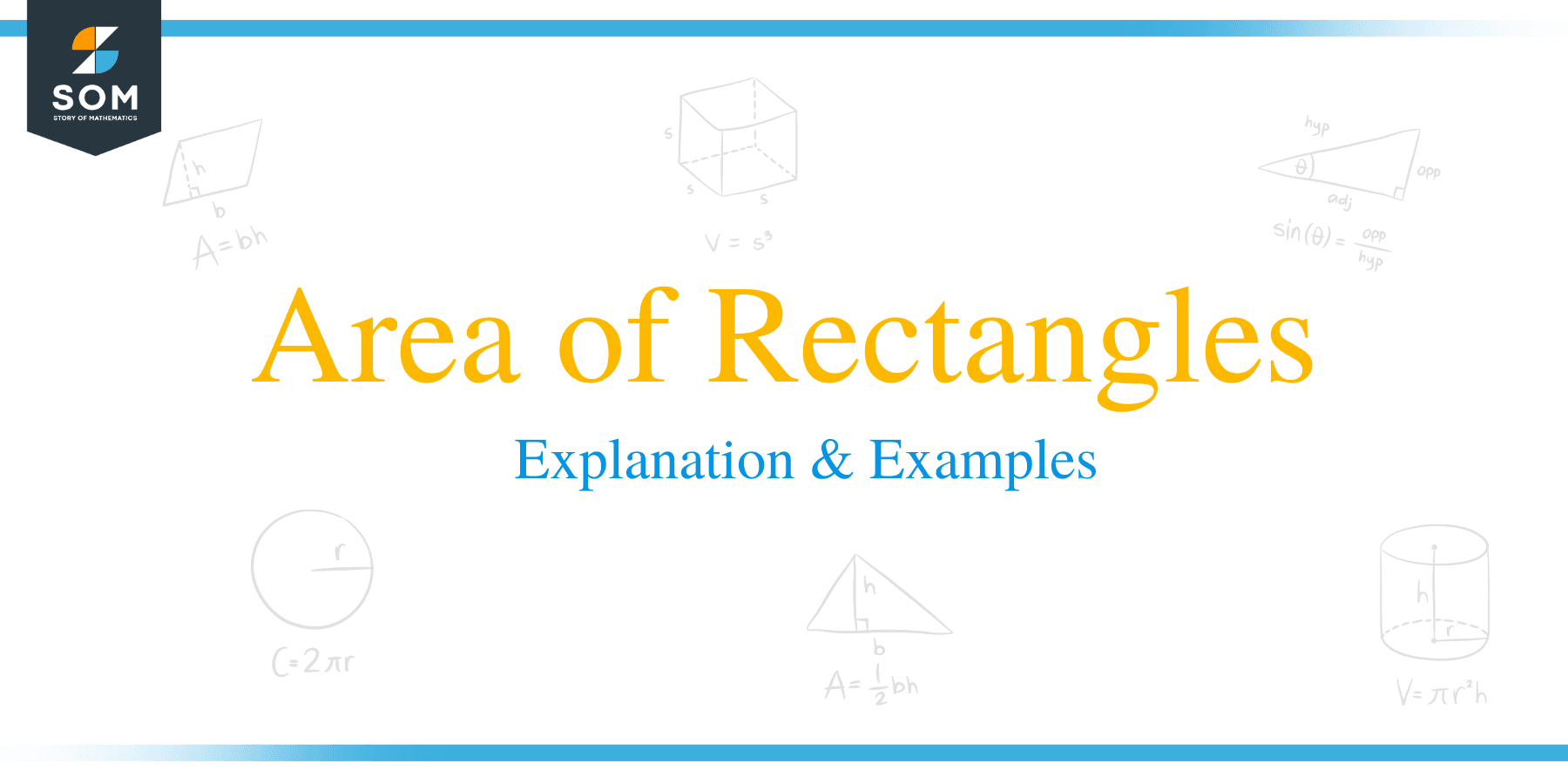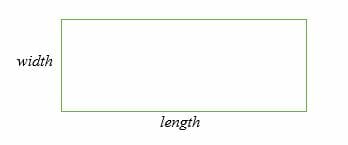- Home
- >
- Area of Rectangles – Explanation & Examples
Area of Rectangles – Explanation & Examples
 By definition, the area of a rectangle is the region covered by the rectangle in a two-dimensional plane. A rectangle is a 2-dimensional polygon with four sides, four angles, and four vertices.
By definition, the area of a rectangle is the region covered by the rectangle in a two-dimensional plane. A rectangle is a 2-dimensional polygon with four sides, four angles, and four vertices.
A rectangle is composed of two sides: length (L) and width (W). The length of a rectangle is the longest side, whereas the width is the shortest side. The width of a rectangle is sometimes referred to as the breadth (b).

How to Find the Area of a Rectangle?
The area of a rectangle can be calculated by counting the number of small full squares of dimension 1 * 1 sq. units required to cover the rectangle.
For example, if the number of full squares counted is 20, then it means that the area of the rectangle is 20 squares units.
The disadvantage with this method is that it does not give accurate figures of the area, and also, the method is inapplicable for finding the area of larger planes.
Area of a Rectangle Formula
The area of a rectangle is the product of the breadth and length of a rectangle.
Therefore, the area of a rectangle formula states that:
Area of rectangle = Length x Width
A = L * W, where A is the area, L is the length, W is the width or breadth.
NOTE: When multiplying the length by the width, always ensure you work in the same unit of length. If they are given in different units, change them to the same unit.
Let’s work out a few example problems about the area of a rectangle.
Example 1
Find the area of a rectangle if its length is 25 m and breadth is 10 m.
Solution
A = l x w
Substitute 25 for l and 10 for w.
= (25 x 10) m2
= 250 m2
So, the area of the rectangle is 250 m2.
Example 2
Find the area of a rectangle whose length and breadth are 10cm and 3 cm, respectively.
Solution
Given,
Length (l) = 10 cm.
Breadth (b) = 3 cm.
Area of the rectangle = length × breadth
= 10 × 3 cm2.
= 30 cm2.
Example 3
If the perimeter of a rectangle is 60 cm and its length is 5 times the width, find the area of the rectangle.
Solution
Let the width be x.
Length is 5 times its width, length = 5x.
But the perimeter of a rectangle =2(l + w) = 60 cm
Substitute 5x for l and x for w.
60 = 2(5x + x)
60 = 12x
Divide both sides by 12 to get.
x = 5
Now substitute x = 5 for the equation of length and width.
Therefore, width = 5 cm and length = 25 cm.
But the area of a rectangle = l x w
= (25 x 5) cm2
= 125 cm2
Example 4
Find the area of a rectangle with a length of 12 cm and a diagonal of 13 cm.
Solution
Here, the width is not given, so we use the Pythagorean theorem to determine the width.
c2 = a2 + b2
132 = a2 + 122
169 = a2 + 144.
Subtract 144 on both sides.
169 – 144 = a2 + 144 – 144
25 = a2
By find the square root of both sides, we get.
a = 5
Therefore, the width of the rectangle is 5 cm.
Now calculate the area.
A = L x W
= (12 x 5) cm2
Example 5
If the rate of cementing a floor is $12.40 per square meter, find the cost of cementing a rectangular floor of length 20 m and width 10 m.
Solution
To find the total cost of cementing the floor, multiply the area of the floor by the rate of cementing.
Area = L x W
= (20 x 10) m2
= 200 m2
Cost of cementing = area x rate of cementing
= 200 m2 x $12.40/m2
= $2,480
Example 6
The length and width are in the ratio 11: 7, and its area is 693 square feet. Find its length and width.
Solution
Let the common ratio of the length and width = x
Therefore, length = 11x
Width = 7x
Area of a rectangle = L x W
693 Sq. ft = (11x) (7x)
693 Sq. ft = 77x2
Divide both sides by 77.
x2 = 9
Find the square of both sides to get;
x = 3.
Substitute.
Length = 11x = 11* 3 = 33
Width = 7x = 7 * 3 = 21
Therefore, the length of the rectangle is 33 ft, and its width is 21 ft.
Example 7
The length of a rectangle is 0.7 m, and its width is 50 cm. What is the area of the rectangle in meters?
Solution
Length = 0.7 m
Width = 50 cm.
Convert 50 cm to meters by dividing 50 by 100. So, 50 cm = 0.5 m
Area = L x W
= (0.7 x 0.5) m2
= 0.35 m2
Example 8
A rectangular wall measures 75 m by 32 m. Find the cost of painting the wall if the rate of painting is Rs 5 per sq. m.
Solution
Area = L x W
= (75 x 32) m2
= 2400 m2
To get the cost of painting the wall, we multiply the area of the wall by the rate of painting.
Cost = 2400 m2 x Rs 5 per sq. m
= Rs 12,000
Example 9
A rectangular courtyard’s floor, which is 50 m by 40 m, is covered by rectangular tiles of dimensions, 1 m by 2 m. Find the total number of tiles needed to cover the courtyard’s floor completely.
Solution
First, calculate the area of the courtyard’s floor and the tile.
Area of the courtyard’s floor = (50 x 40) m2
= 2000 m2
Area of a tile = (1 x 2) m2
= 2 m2
To find the number of tiles needed to cover the courtyard’s floor, we divide the courtyard’s floor by the area of a tile.
Number of tiles = 2000 m2/2 m2
= 1000
Therefore, 1000 tiles are needed to cover the floor.
